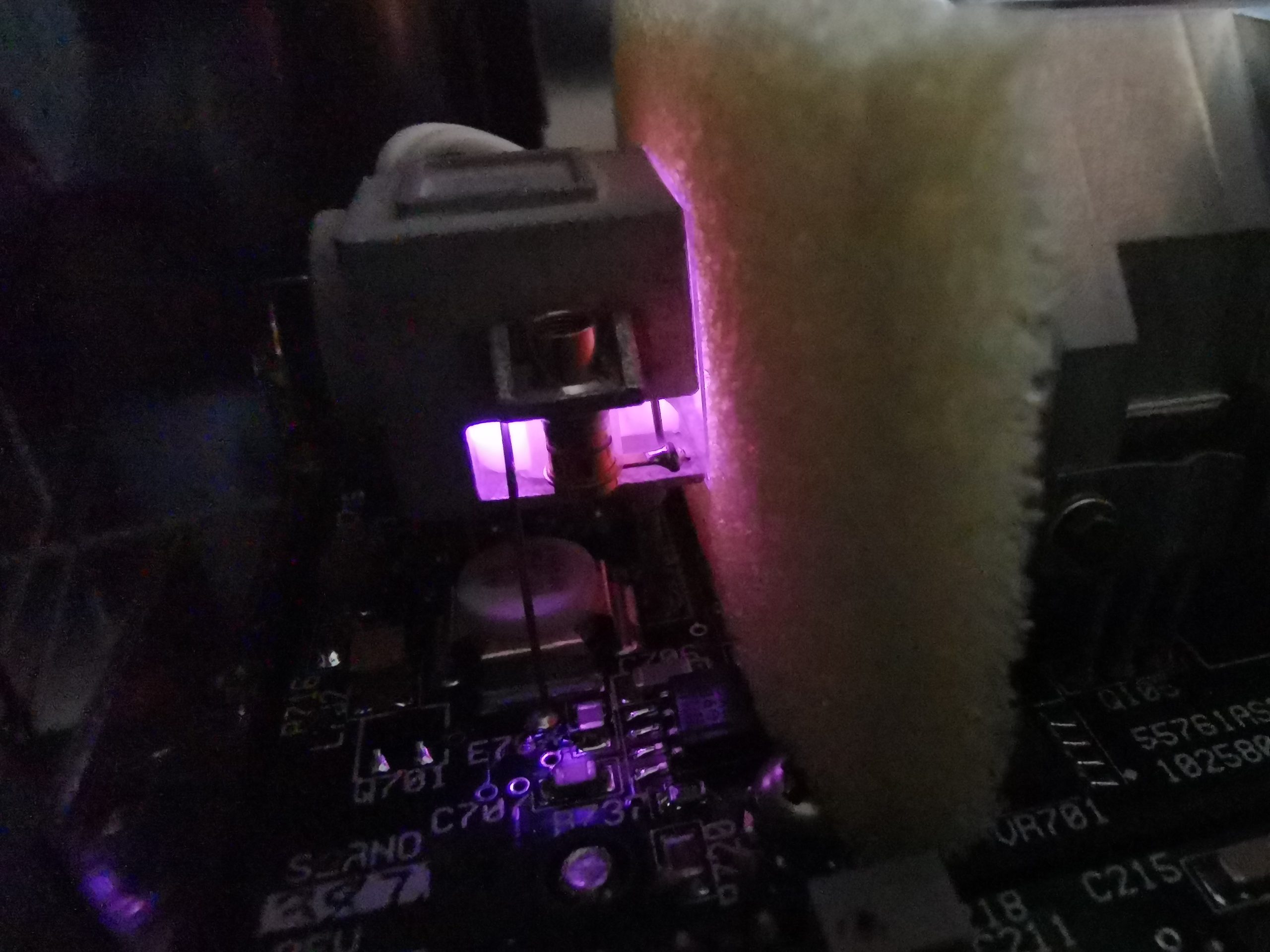
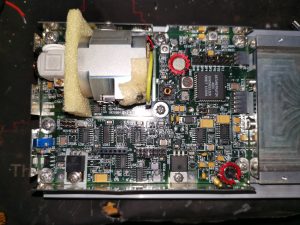
Time for another Rubidium Standard Teardown! This one was supposed to happen a year ago, however I completely forgot about this unit. This is an Efratom / Datum LPRO-101 Rb standard, which does differ somewhat internally from the previous unit I tore down. Above is the unit with the Mu-Metal top cover unclipped. The PCB is very tightly packed with components, and this unit dates to approx 1999. The way all of these units operate is with a standard Quartz oscillator, and locking that to a Rubidium physics package to gain the stability of an atomic reference.
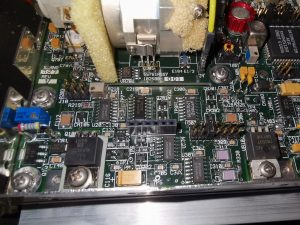
The bottom left corner of the board has the C-Field control & servo section, with the C-Field (Frequency Adjust) pot on the left, with the selectable tuning resistor. There’s a mountain of 74 series glue logic in this unit, and will be visible in every shot. The adjustment pot can be accessed through a tube in the top cover with an adjustment tool.
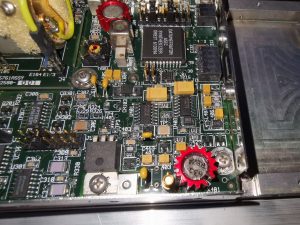
Bottom right is the 20MHz VCXO section, with the main crystal in the TO-3 can wrapped in a heatsink at the bottom right. Again there’s more space for selectable components here, with a blank spot for another ceramic cap – most likely to further tune the operating frequency. One of the main regulators is here as well, an LM7805 in the TO-220 package.

Here’s the RF synthesizer, used to indirectly generate the 6.8GHz hyperfine transistion frequency of Rubidium. The synth here frequency multiplies the 20MHz main clock to 60MHz, and feeds this through a coaxial cable into a Step Recovery Diode, mounted inside the microwave cavity with the Rb cell. This section also sweeps the frequency to be able to obtain physics lock when powered up.
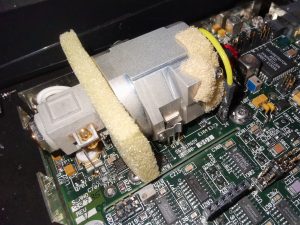
This is the very important section of the oscillator – the Rubidium Physics package. This section is heated to high temperature – 100°C for the lamp (the small section on the left), and 70°C for the vapour cell & microwave cavity (the larger section on the right).
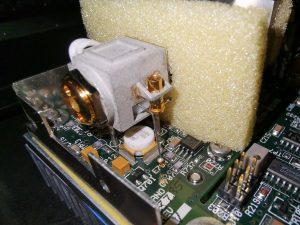
The Rb spectral source is hiding inside this small casting, with a barrel tuning capacitor on the side. In these units, the lamps are driven with RF, through a coil of wire wrapped around the glass bulb of the lamp itself. In my case, I managed to pick up a 156MHz signal in this area with a spectrum analyser, so I can only assume this is the drive frequency for the lamp. The main RF drive MOSFET, an MRF160 sits underneath the lamp housing. The driver is a Colpitts oscillator, and drives the lamp with about 4W of RF power. The lamp is heated with a MOSFET thermally bonded to the other side of the housing, which can’t be seen here.
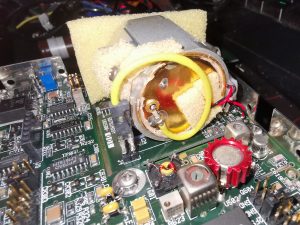
The other end of the physics package has the Rubidium Vapour cell, photodetector & step recovery diode housed in a microwave cavity. The coax cable feeding the 60MHz signal from the synthesizer can be seen going through a passthrough in the brass plate. Inside is the SRD & photodetector. This section is heated by further thermally bonded MOSFETs on the sides of the cavity housing.
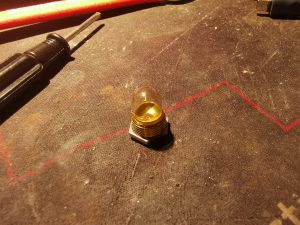
Loosening the locknut on the lamp housing, and gently unscrewing the gold-plated holder allows removal of the bulb. The tiny bead of Rubidium metal can be just seen in the pinch of the bulb, with a couple of spots on the outer part of the bulb. The lamp voltage on this unit was around 6.21v, however after removing the lamp & giving it a clean, and warming it to get the Rubidium to re-condense in the pinch got the voltage up to 7v – this is plenty healthy for one of these.
There’s definitely some wear though – there’s a slightly yellow tinge to the glass, and from what I have read in a couple of scientific papers on the subject of Rb Lamp Failure Modes, this is probably Rubidium Oxide, caused by an interaction between the metal & the glass.
rubidiumRubidium GlowA final photo shows the very pretty colour of these lamps – it’s a pastel purple colour, and surprisingly the camera picks this up very well.
